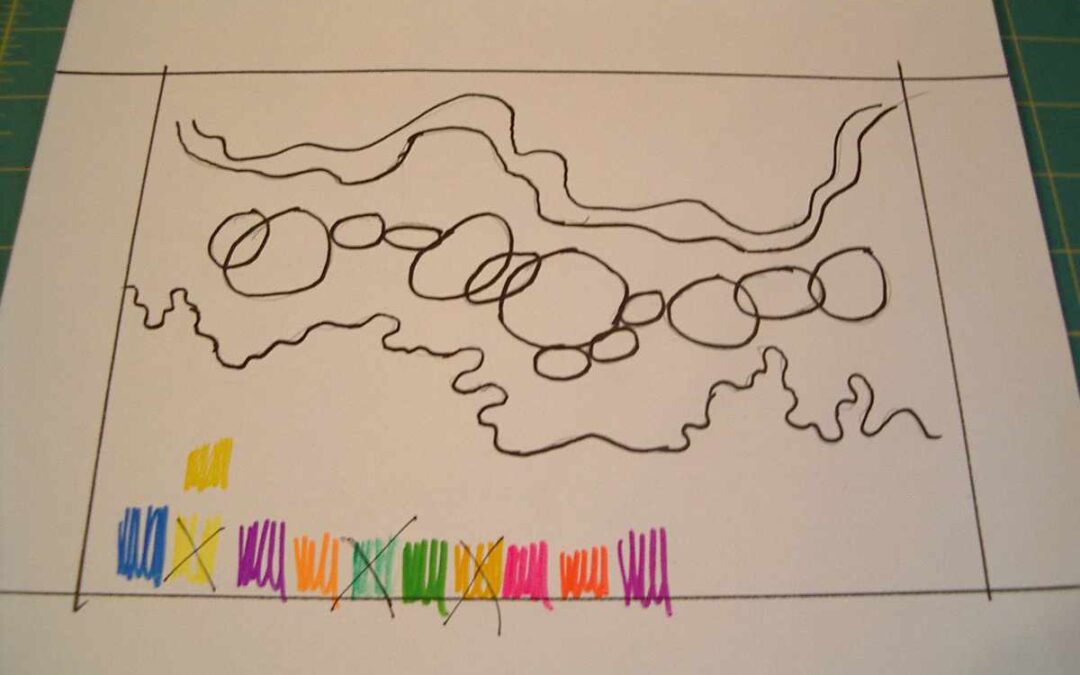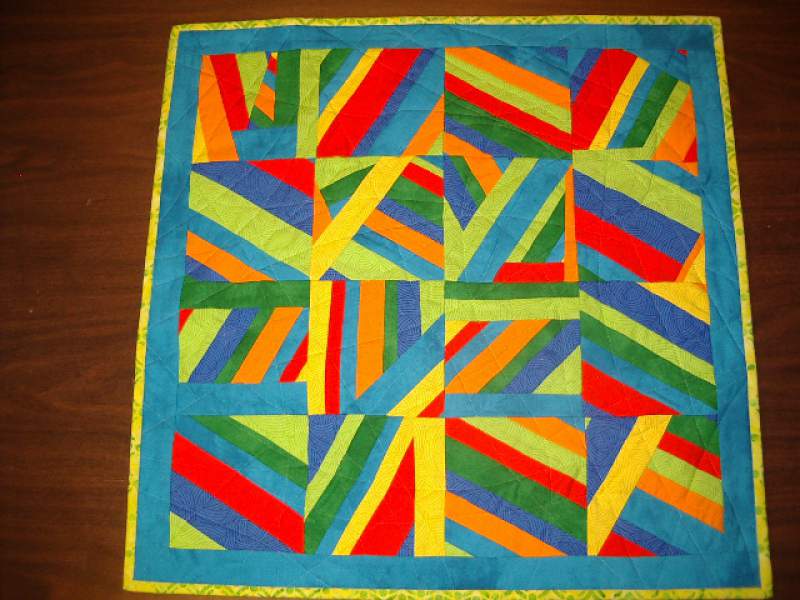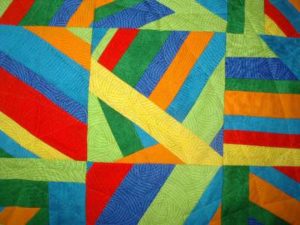
WHAT IS THIS QUILT REALLY ALL ABOUT?
Preliminary sketch of design elements and color choices
How do you decide what quilt to make next? Do you start with a pattern you like? Do you have
some beautiful fabric you can’t wait to use? Has something inspired you? We all start
somewhere with a goal for our quilts, even when that goal is vague and we just grab some
fabric, start cutting and sewing, and see what happens.
A few months ago I discovered a unique way to determine what my next quilt would be like. I
was reading “From Concept To Form In Landscape Design” by Grant W. Reid, ASLA. It’s a
wonderful book, devoted to visual design principles, filed with drawings and photos that
illustrate written descriptions of design concepts. While the book’s subject matter is landscape,
its content can be applied to all of the visual arts. In our case, that means QUILTS!
The book opens with a discussion of general philosophical concepts: “Ask yourself ‘What is this
place really all about?’ Designs that are rooted in a strong philosophical base will have a strong
sense of identity. A person experiencing such a place knows he or she is somewhere special.”
There was an “ah ha” moment. Contemplating my next quilt, I could ask myself “What is this
quilt really all about?” A strong sense of connectedness to a quilt and a meaningful experience
viewing a quilt was possible for me as the maker and others as the viewers 🙂
My first learning experience with this approach was in January 2021 just after a mob stormed
the Capitol building in Washington D.C. I asked myself, what do I really want, right now? How
could I express those feelings in a quilt? My answer was peace within movement (like in Tai
Chi), the absence of upheaval and discord, and hope for a new beginning. From that answer
came design choices:
horizontal orientation for a sense of stability
curves, meanders, and soft edges that flow for peace within movement
a connected sequence of areas for unity within a group
bright, springtime colors for hope and a new beginning
This philosophical and conceptual approach to quilt making is a HUGE challenge. That January
quilt is still in the thinking, experimenting, design stages. Incorporating those design choices
into a satisfying fabric form using principles such as Unity, Balance, Harmony, Scale, and Color is
far more difficult than expected.
References
FROM CONCEPT TO FORM IN LANDSCAPE DESIGN, Grant W. Reid, ASLA, John Wiley & Sons, Inc.
1993 (First Edition)



